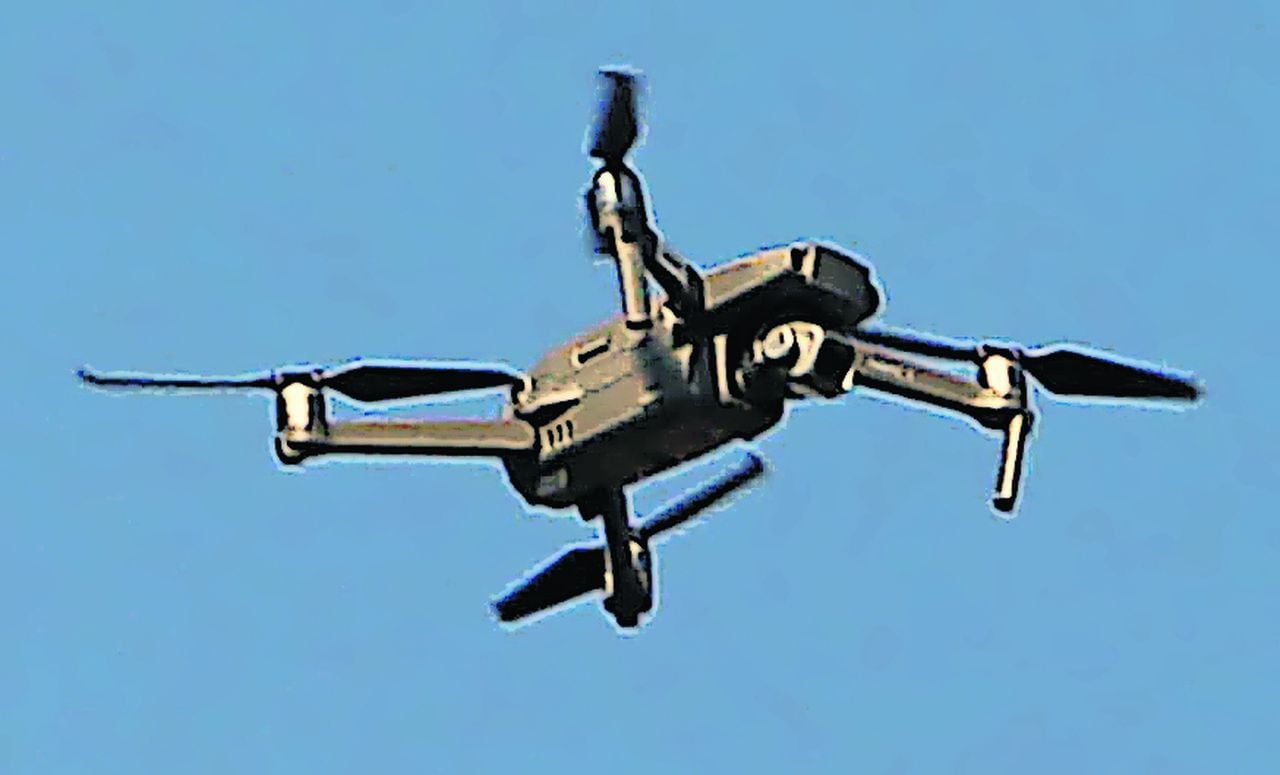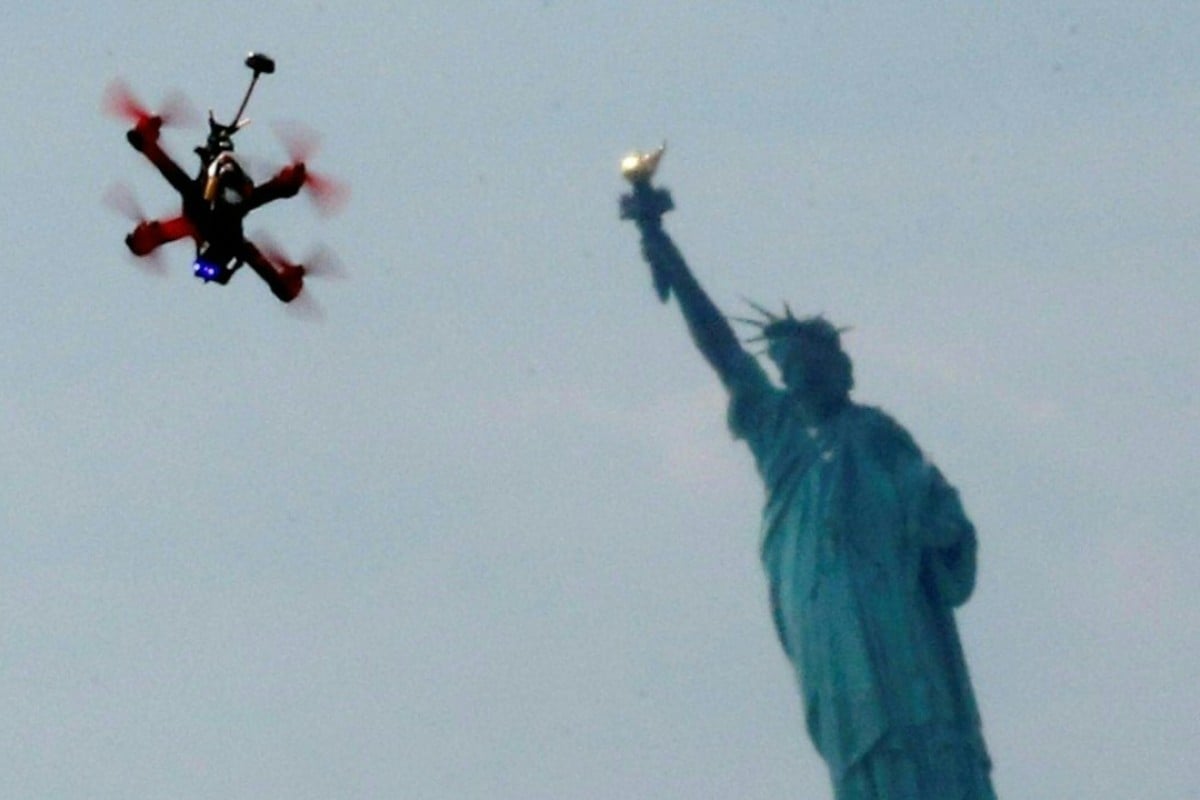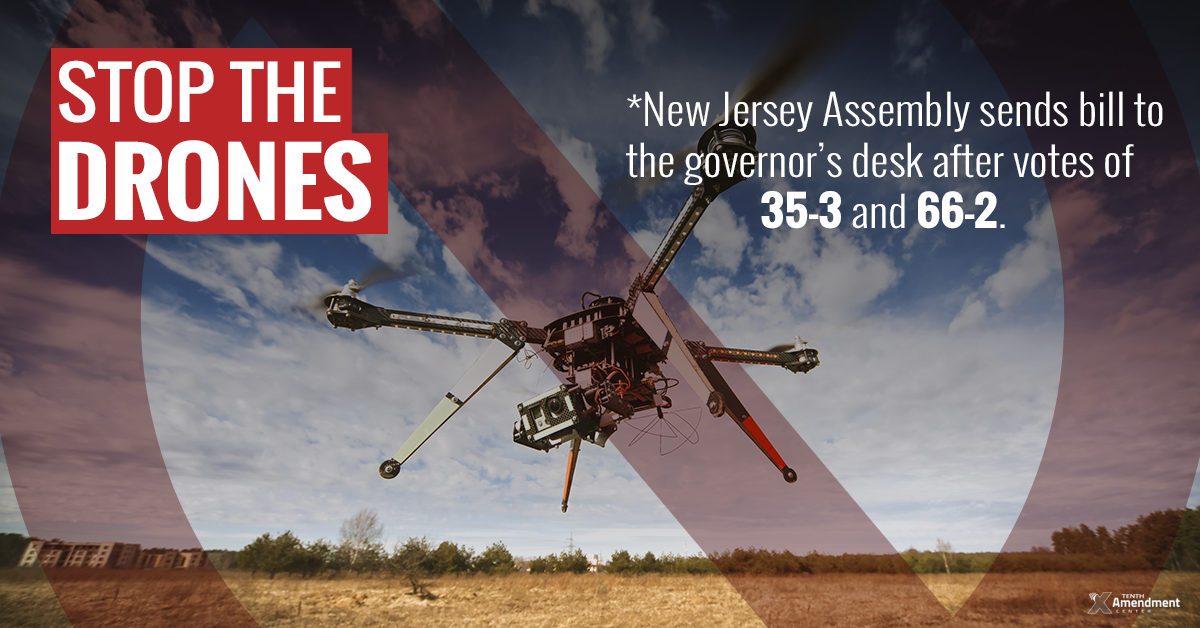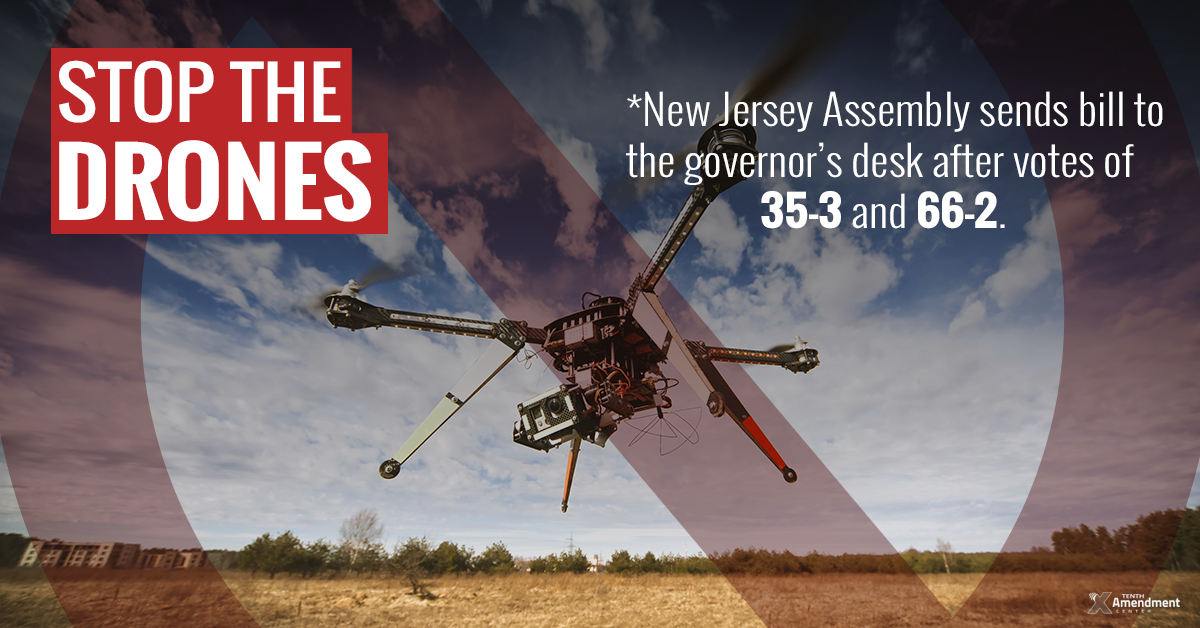Drones Over New Jersey Solved explores the multifaceted challenges and innovative solutions surrounding unmanned aerial vehicle (UAV) operations within the state. This examination delves into the legal framework governing drone usage, analyzes prevalent incidents, and highlights technological advancements employed to mitigate risks and enhance safety. The narrative also considers public perception, media influence, and the crucial role of law enforcement in navigating this evolving airspace.
From navigating complex legal landscapes and addressing privacy concerns to leveraging cutting-edge technology for detection and management, this comprehensive analysis provides a nuanced understanding of the drone situation in New Jersey. We’ll examine successful interventions by law enforcement and explore the evolving public discourse surrounding drone technology and its implications for the state.
Legal Aspects of Drone Usage in New Jersey
New Jersey’s drone regulations, like those in many states, aim to balance the innovative potential of drone technology with public safety and privacy concerns. Understanding these laws is crucial for both drone operators and the public.
New Jersey Drone Laws and Regulations
New Jersey’s drone laws primarily stem from federal regulations Artikeld by the Federal Aviation Administration (FAA), supplemented by state-specific statutes addressing issues like privacy and public safety. These regulations cover aspects such as registration requirements, operational limitations (flight altitudes, proximity to airports), and restrictions on specific activities like flying over crowds or at night without proper authorization.
Penalties for Violating Drone Laws in New Jersey
Penalties for violating New Jersey’s drone laws vary depending on the severity of the infraction. Minor violations might result in warnings or fines, while more serious offenses, such as reckless operation endangering public safety, could lead to significant fines and even criminal charges. The FAA also has its own enforcement mechanisms, which can include civil penalties.
Comparison of New Jersey Drone Laws with Neighboring States
New Jersey’s drone laws are largely consistent with those of its neighboring states, particularly concerning FAA-mandated regulations. However, nuances exist regarding specific state-level restrictions on privacy, public spaces, and emergency response operations. For example, some neighboring states might have more stringent rules about flying drones near critical infrastructure or sensitive areas.
Summary of Key Aspects of New Jersey Drone Regulations
| Regulation Type | Specific Restriction | Penalty | Relevant Statute |
|---|---|---|---|
| Registration | Unregistered drone operation | Fines, potential legal action | FAA Regulations |
| Operational Limits | Flying within restricted airspace (e.g., airports) | Fines, potential legal action | FAA Regulations, NJ State Statutes |
| Privacy | Unauthorized surveillance or recording of individuals | Fines, civil lawsuits | NJ State Statutes |
| Public Safety | Reckless operation endangering others | Significant fines, criminal charges | NJ State Statutes, FAA Regulations |
Common Drone-Related Incidents in New Jersey
Several incidents involving drones have occurred in New Jersey, highlighting the need for responsible operation and effective regulatory frameworks. These incidents underscore the potential risks associated with drones, including privacy violations and near misses with aircraft.
Examples of Solved Drone Incidents in New Jersey

- Incident Type: Privacy Violation: A drone was used to capture footage of a private residence without the owner’s consent, leading to a civil lawsuit and a settlement requiring the drone operator to pay damages and delete the footage.
- Incident Type: Near Miss with Aircraft: A drone came dangerously close to a commercial airliner during its approach to a major airport, resulting in a temporary grounding of flights and a significant investigation by the FAA and local law enforcement. The operator faced hefty fines and potential criminal charges.
- Incident Type: Interference with Emergency Services: A drone hampered rescue operations during a wildfire by flying into the airspace designated for emergency helicopters. The drone operator was identified and penalized for obstructing emergency response.
Technological Solutions for Drone-Related Problems
Technological advancements offer solutions to mitigate the risks associated with drone operations. These technologies are crucial for enhancing drone safety, security, and responsible usage.
Drone Tracking, Identification, and Management Technologies
Several technologies are being employed to track, identify, and manage drones. These include radar systems that detect drone presence, software that analyzes drone flight patterns, and counter-drone systems capable of intercepting or disabling rogue drones. Integration of these technologies into a comprehensive system can significantly improve drone safety and security.
Hypothetical System for Improving Drone Safety and Security in New Jersey
A hypothetical system could integrate various technologies, such as a statewide drone registration database, real-time drone tracking capabilities, geofencing technology to restrict drone flights in sensitive areas, and a rapid response team trained to handle drone-related emergencies. This system would require collaboration between government agencies, law enforcement, and private sector technology providers.
Comparison of Drone Detection and Counter-Drone Technologies
Different technologies offer varying strengths and weaknesses. Radar systems offer long-range detection but might struggle with smaller drones. Optical systems provide high-resolution imagery but are limited by range and weather conditions. Counter-drone systems employing jamming or net-launching technologies can neutralize threats but raise concerns about unintended consequences.
Advancements in Technology Aiding in Solving Drone-Related Issues
Advances in artificial intelligence (AI) and machine learning are playing a crucial role in enhancing drone detection and identification capabilities. AI-powered systems can analyze vast amounts of data to identify suspicious drone activity and predict potential risks. This allows for proactive interventions, minimizing the likelihood of incidents.
Public Perception and Media Coverage of Drones in New Jersey
Public perception of drones in New Jersey, as elsewhere, is shaped by media portrayals of both positive and negative incidents. Understanding this dynamic is vital for fostering responsible drone use and mitigating public concerns.
Common Public Concerns Regarding Drone Usage
Common concerns include privacy violations, potential misuse for surveillance, safety risks posed by drones to aircraft and people, and the potential for drones to be used for illegal activities. These concerns need to be addressed through education and responsible regulation.
Media Portrayals of Drone Incidents and Their Impact
Media coverage of drone incidents significantly influences public opinion. Sensationalized reporting of accidents or privacy violations can heighten public anxiety, while responsible reporting that highlights safety measures and technological advancements can foster greater understanding and acceptance.
Media Coverage’s Influence on Understanding and Acceptance of Drones
Balanced and factual media coverage is crucial in shaping public perception. It’s essential to present both the risks and benefits of drone technology, emphasizing the importance of responsible use and regulatory frameworks to mitigate potential hazards.
The recent drone activity over New Jersey has thankfully been resolved. Authorities utilized advanced tracking technology to identify and neutralize the threat. Interestingly, a photographer documenting the aftermath used a fujifilm x100v for its exceptional image quality and compact size, capturing crisp details even from a distance. The successful resolution underscores the importance of robust counter-drone measures in safeguarding airspace.
Timeline of Significant Media Events Related to Drones in New Jersey
A timeline would include notable news stories concerning drone incidents, regulatory changes, and public discussions about drone use in New Jersey. This would provide a historical context for understanding the evolution of public perception and policy responses.
The Role of Law Enforcement in Addressing Drone Issues: Drones Over New Jersey Solved

Law enforcement agencies play a critical role in addressing drone-related problems, ensuring public safety and enforcing regulations. Their actions and preparedness are essential for effective management of drone activity.
Methods and Procedures Employed by Law Enforcement
Law enforcement agencies utilize various methods, including drone detection technologies, surveillance techniques, and collaboration with other agencies to address drone-related issues. They investigate incidents, identify drone operators, and enforce relevant laws and regulations.
Collaboration with Other Organizations, Drones over new jersey solved

Effective management of drone activity requires collaboration between law enforcement, the FAA, state agencies, and private sector stakeholders. This collaborative approach ensures a coordinated response to drone-related incidents and facilitates the development of effective policies and procedures.
Examples of Successful Law Enforcement Interventions
Examples include the successful identification and apprehension of drone operators involved in illegal activities, the prevention of drone interference with emergency response operations, and the effective investigation of drone-related accidents.
Training and Equipment Used by Law Enforcement
Law enforcement personnel receive specialized training on drone detection, identification, and counter-drone technologies. They are equipped with advanced technologies, such as radar systems, optical sensors, and counter-drone systems, to effectively address drone-related challenges.
In conclusion, the issue of drones over New Jersey, while presenting significant challenges, has also spurred advancements in technology and legal frameworks. The collaborative efforts of law enforcement, technological innovators, and the public are crucial in ensuring responsible drone operation while maximizing the benefits of this rapidly evolving technology. A continued focus on education, proactive regulation, and technological innovation will be essential in shaping a safe and secure airspace for all.
Questions Often Asked
What are the most common types of drone violations in New Jersey?
Common violations include flying drones in restricted airspace (near airports, etc.), violating privacy laws, and operating drones without proper registration or certification.
What is the maximum penalty for violating New Jersey drone laws?
Penalties vary depending on the severity of the violation but can include substantial fines and even jail time.
Are there specific areas in New Jersey where drone flight is completely prohibited?
Yes, areas near airports, critical infrastructure, and certain public events often have restricted airspace for drone operations.
The recent increase in unauthorized drone activity over New Jersey prompted a swift response from authorities. Addressing such airspace violations often requires advanced technological solutions, and companies like archer aviation , known for their innovative aircraft designs, are at the forefront of developing safer and more efficient air traffic management systems. This ultimately benefits efforts to solve the drone issues plaguing New Jersey airspace.
How can I report a drone-related incident in New Jersey?
Report incidents to your local law enforcement agency or the relevant federal aviation authority.
